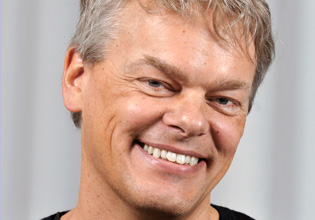Vorträge & Diskussionen
Grid Cells and the Brain’s Map of Space

Lecture by Leopoldina member and Nobel Laureate Edvard Moser
| Datum: | Montag, 15. Mai 2017 |
| Uhrzeit: | 17:00 bis 20:00 |
| Ort: | Langenbeck-Virchow-Haus, Luisenstr. 58/59, 10117 Berlin |
The medial entorhinal cortex (MEC) is part of the brain’s circuit for dynamic representation of self-location. A key component of this representation is the grid cell, whose spatial firing fields tile environments in a periodic hexagonal pattern, like in a Chinese checkerboard. The MEC circuit contains also other functional cell types, such as head direction cells and border cells, which are intermingled among the grid cells. In this lecture Nobel laureate and Leopoldina member, Edvard Moser, will review evidence pointing to MEC network properties as elements of the mechanism for grid formation. Moser will further demonstrate that running speed is represented in the firing rate of a ubiquitous but functionally dedicated population of MEC neurons, and he will show that speed is represented across a wider brain circuit that includes speed cells in the mesencephalic locomotor region, whose outputs may reach the MEC via speed cells in the diagonal band of Broca. Finally he will present data pointing to some of the mechanisms underlying the early development of the grid-cell system. He will show that maturation of the entorhinal-hippocampal circuit is driven by excitatory activity in the stellate cells of the MEC, with stellate cells instructing progressive maturation through the entorhinal-hippocampal circuit.
With the discovery of place cells and grid cells, as well as other co-localized spatial cell types, it has become possible to study neural computation at the high end of the cortical hierarchy, quite independently of sensory inputs and motor outputs. The presence of an experimentally controllable spatial firing correlate, combined with the access to activity patterns of multiple discrete cell types, provides researchers with a model system to determine not only how specific activity patterns are generated but also how activity gets transformed from one cell type to another.
Foto: Ned Alley
Further Information and Registration
The lecture is open to anyone interested and free of charge. Please register under the following link.
Contact
Dr. Katja Patzwaldt
Scientific Officer, Presidential Office
Tel.: 030 / 203 8997 431
E-Mail: katja.patzwaldt@leopoldina.org
